Explore Wajima - Japan Travel, Asia
Nestled on the breathtaking Noto Peninsula in Ishikawa Prefecture, Wajima is a hidden gem of Japan that awaits to be discovered. Known for its rich cultural heritage, traditional crafts, and stunning natural landscapes, this charming coastal city offers a unique blend of history, tradition, and beauty. Whether you're an adventurer, a history enthusiast, or a foodie, Wajima has something to captivate every traveler. Let’s explore the best of Wajima, from its top attractions and must-try dishes to its vibrant festivals and local culture.
Craving an exceptional Japan adventure? Explore our handpicked premium tours here for the ultimate experience.
Population: Approximately 28,000 in 2018.
Economy: The primary industries in the area are lacquerware manufacture, tourism, agriculture, and commercial fishing.
Landmarks: Famous for the Wajima Morning Market ( or Wajima Asaichi), Senmaida Rice Terraces, and Wajima-nuri Lacquerware Workshops.
Japan
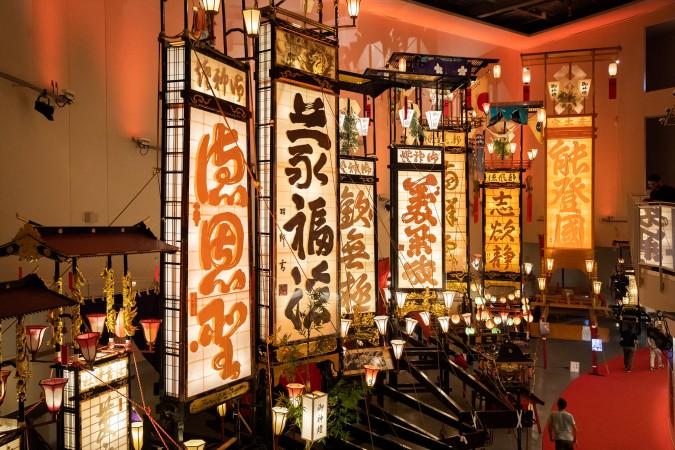
Overview of Wajima
History & Cultural Influence
Wajima's history dates back to ancient times, with its development spanning several centuries. During the Edo period, Wajima thrived as a significant port and cultural center, influencing the region's art, trade, and traditions. The city's historical significance is evident in its preserved architecture, traditional crafts, and local customs that have been passed down through generations. Along with its historical past, Wajima's cultural heritage has been shaped by its interactions with neighboring regions and the natural environment. One of the city's most renowned traditions is Wajima-nuri, a form of lacquerware that exemplifies meticulous craftsmanship and artistry. This traditional craft is not only a testament to Wajima's rich culture but also a symbol of its enduring artistic legacy.
Interaction with The Locals
Wajima is home to a population of approximately 28,000 residents. The city's citizens are known for their warmth and hospitality, welcoming visitors with open arms. They take pride in their rich cultural heritage, especially in traditional crafts like Wajima-nuri lacquerware. The close-knit community values their traditions and often engages in local festivals and daily markets, providing visitors with a genuine and immersive cultural experience. The people of Wajima embody the spirit of their city, combining a deep respect for history with a friendly and inviting demeanor.
Explore the unique charm of Kyoto, another must-visit place in Japan, in our article here.
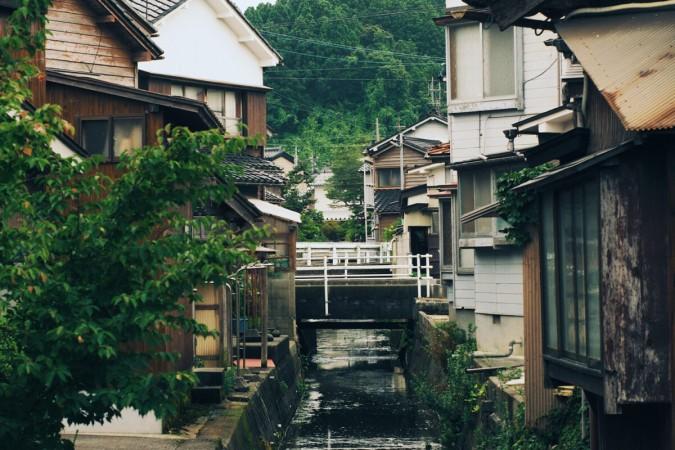
Wajima Shi, Ishikawa Prefecture - © Japan Artisan Foundation
Top Attractions in Wajima
Wajima Morning Market (Wajima Asaichi)
The Wajima Morning Market is a bustling and vibrant hub where you can experience the essence of local life. This market, which opens early each day, is well-known for its extensive selection of fresh seafood, regional products, and handcrafted goods. Stroll through the lively stalls to sample seasonal fruits, freshly caught fish, and handmade items like Wajima-nuri lacquerware.
Senmaida Rice Terraces
The Senmaida Rice Terraces are a stunning example of traditional Japanese agriculture and landscape artistry. Stretching over 1,000 rice paddies, these terraces are meticulously maintained by local farmers. Especially at sunrise or sunset, the terraces' reflection of the sky is a sight to see. Walking paths wind through the fields, offering visitors a chance to appreciate the beauty of this agricultural marvel up close and to enjoy panoramic views of the surrounding countryside.
Wajima-nuri Lacquerware Workshops
Wajima is renowned for its high-quality lacquerware, known as Wajima-nuri. To fully appreciate this traditional craft, visit one of the lacquerware workshops where skilled artisans demonstrate the meticulous process of creating these beautiful pieces. You can participate in hands-on sessions to learn about the art of lacquering, from the initial application of lacquer to the intricate designs and polishing techniques. These workshops offer a deep dive into the cultural significance and craftsmanship behind Wajima-nuri.
Sosogi Coast
The stunning natural beauty and rugged shoreline of the Sosogi Coast are well-known among locals and other visitors. Known for its rugged cliffs, rocky shores, and clear blue waters, the coast is a haven for nature lovers and photographers. Take a scenic walk along the coastline to marvel at the unique rock formations and enjoy the refreshing sea breeze. The coast is also a great spot for a leisurely picnic while taking in the stunning ocean views.
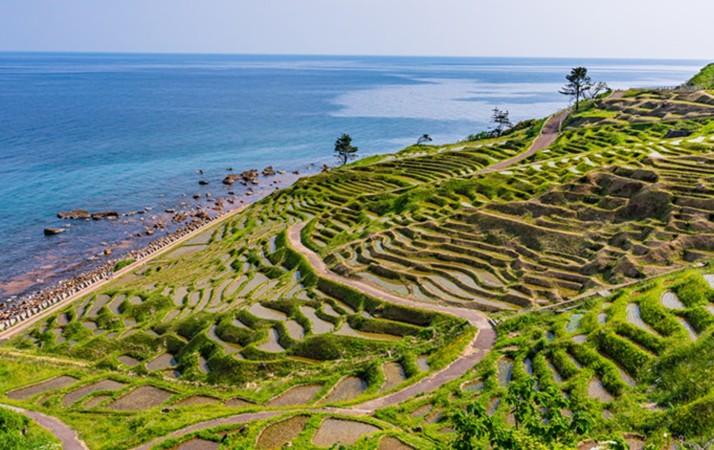
Senmaida Rice Terraces - © Japan National Tourism
Must-Try Dishes in Wajima
Wajima's culinary tradition is a delight for food lovers. The city is famous for its fresh seafood, thanks to its coastal location, and its traditional dishes reflect the local flavors and culinary techniques. Each dish tells a story of the region's traditions, flavors, and the pride locals take in their food, adding another layer of enjoyment to your visit.
- Noto Beef: Known for its tender texture and rich flavor, Noto beef is a must-try delicacy in Wajima. It's often served grilled or in hot pot dishes, providing a melt-in-your-mouth experience.
- Wajima-Style Sushi: Fresh seafood is a staple in Wajima, and the local sushi is no exception. Made with the freshest fish and seasoned rice, Wajima-style sushi is a culinary treat.
- Kaisendon (Seafood Bowl): A delightful bowl of fresh, raw seafood served over a bed of rice. Topped with various sashimi, sea urchin, and other local catches, it's a dish that showcases the best of Wajima's seafood.
- Wajima Nabe: A traditional hot pot dish featuring a rich broth, fresh seafood, and seasonal vegetables. During the colder months of Winter, this dish is the perfect comfort delight.
- Noto Don: This local dish features rice topped with a variety of local ingredients, such as Noto beef, seafood, and vegetables, often seasoned with soy sauce and local spices.
- Shioyaki (Salt-Grilled Fish): Freshly caught fish, often sea bream or mackerel, grilled to perfection with a simple seasoning of salt. The natural flavors of the fish are enhanced by the grilling process.
- Soba and Udon Noodles: Handmade buckwheat soba and thick wheat udon noodles served in various styles, including hot broth, cold dipping sauce, and topped with tempura or fresh seafood.
- Traditional Japanese Sweets: Don't miss out on trying Wajima's traditional sweets, such as mochi and manju, which are often beautifully crafted and delicious.
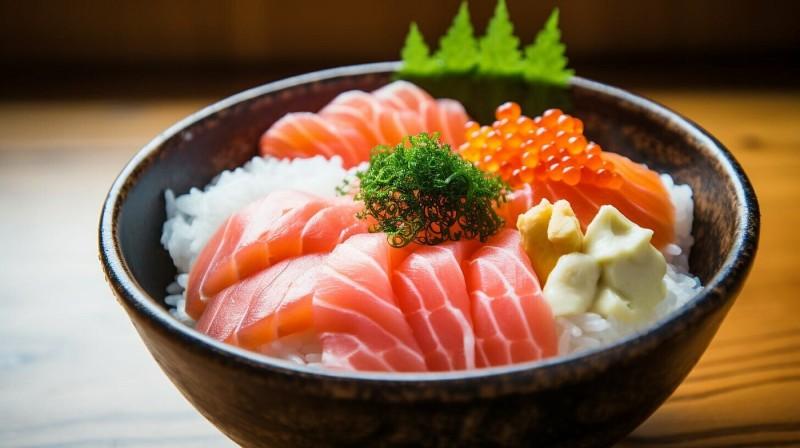
Kaisendon (Seafood Bowl) - © Medium
Festivals & Local Celebrations
Major Festivals in Wajima
- Wajima Taisai Festival: Held annually in August, Wajima Taisai is one of the city's most vibrant and culturally significant events. The festival features spectacular parades with ornate floats, traditional dances, and the famous "kiriko" lanterns, which are large, intricately decorated lanterns carried through the streets. This lively celebration provides an immersive experience into Wajima’s local traditions and offers visitors a chance to participate in the festivities alongside locals.
- Kiriko Lantern Festival: Another highlight of Wajima’s festival calendar is the Kiriko Lantern Festival. This enchanting event takes place in summer and is famous for its giant, beautifully illuminated lanterns. The festival includes traditional music performances, dance, and food stalls. The sight of the lanterns glowing against the night sky creates a magical atmosphere, making it a memorable experience for both locals and visitors.
Seasonal Celebrations in Wajima
- Spring Cherry Blossom Viewing (Hanami): In spring, Wajima's parks and gardens are adorned with cherry blossoms. Hanami, the traditional practice of picnicking under blooming cherry trees, is a beloved activity for locals and tourists alike.
- Autumn Harvest Festival: This October festival marks the end of the harvest season. It features local produce, traditional music, and dances, giving visitors a taste of Wajima's agricultural heritage.
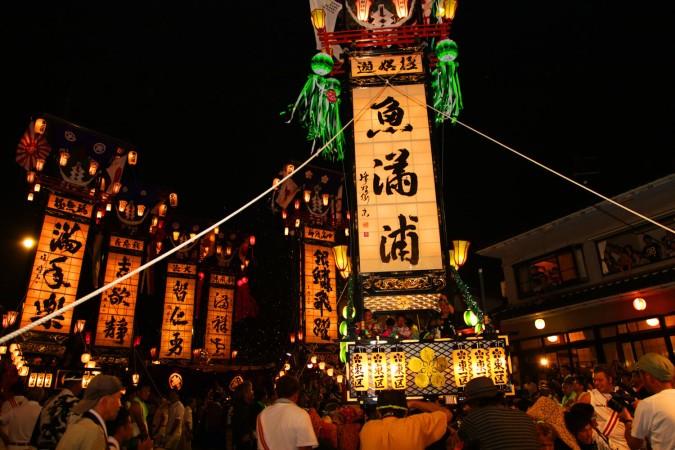
Kiriko Lantern Festival - © Noto Kiriko Official Website
What to Do in Wajima
Whether you’re interested in traditional crafts, outdoor adventures, or local festivals, Wajima offers a diverse range of activities that cater to all interests. Embrace the city’s unique charm and make the most of your visit by exploring these engaging and memorable experiences.
- Engage in Traditional Craft Workshops: The magnificent lacquerware known as Wajima-nuri is the reason for Wajima's fame. Dive into the local culture by participating in hands-on craft workshops where you can learn the intricate art of lacquerware.
- Fishing and Boating Adventure: Take advantage of Wajima’s coastal location by embarking on a fishing or boating adventure. Local guides can lead you on fishing trips to experience the thrill of catching fresh seafood.
- Explore Wajima Hiking Trails: The region offers a variety of hiking trails with breathtaking views. Popular routes include paths through the picturesque Senmaida Rice Terraces and along the rugged Sosogi Coast. These trails provide a great way to immerse yourself in the area's natural beauty.
- Onsen Wellness Retreat: For a soothing and relaxing experience, visit one of Wajima’s local hot springs (onsen). Enjoy a leisurely soak in the therapeutic waters while taking in scenic views. Hot springs are a fantastic way to unwind after a day of exploring and to experience a cherished aspect of Japanese culture.
- Wajima Food Tours: Don’t miss the chance to indulge in Wajima’s local culinary delights. From savoring fresh seafood in a kaisendon (seafood bowl) to enjoying Noto beef and traditional Japanese sweets, Wajima offers a rich variety of flavors. Exploring local restaurants and food stalls will enhance your experience and give you a true taste of Wajima.
Shopping in Wajima
- Traditional Markets: The Wajima Morning Market (Wajima Asaichi) is a must-visit for shoppers. Open every day, the market features stalls selling fresh seafood, local produce, and handmade crafts. It's an excellent place to pick up unique souvenirs and taste local delicacies.
- Local Shops: Wajima is dotted with small shops offering a range of traditional goods. From Wajima-nuri lacquerware and ceramics to textiles and local snacks, these shops provide an authentic shopping experience.
- Souvenirs: Popular souvenirs from Wajima include beautifully crafted lacquerware, intricately designed ceramics, and locally produced sake. These products are ideal as presents and travel souvenirs.
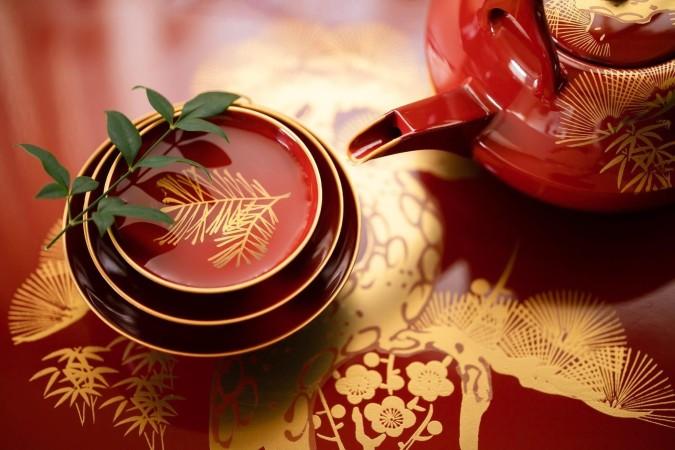
Wajima-nuri lacquerware - © Japanese Taste
Weather in Wajima: Best Time to Visit
Spring in Wajima
- Weather: Spring in Wajima is mild and pleasant, with temperatures ranging from 10°C to 20°C (50°F to 68°F). It's a great time to see cherry blossoms and enjoy outdoor activities.
- Tourism Trend: Travelers love spring because of the hanami (cherry blossom viewing) festivities. Wajima's parks and gardens attract a large number of visitors who come to see the breathtaking sakura flowers. It's also a great time to go sightseeing and engage in outdoor activities like trekking and visiting the Senmaida Rice Terraces because of the pleasant weather.
Summer in Wajima
- Weather: Summers are warm and humid, with temperatures averaging between 20°C and 30°C (68°F to 86°F). The coastal breeze offers some relief, and it's the perfect season for festivals and beach activities.
- Tourism Trend: Summer sees an influx of tourists drawn to the vibrant festivals, such as the Wajima Taisai Festival and the Kiriko Lantern Festival. Beach activities and coastal explorations are also popular during this season. However, the humidity can be high, so visitors should come prepared for the warm weather.
Autumn in Wajima
- Weather: Autumn brings cooler temperatures, ranging from 10°C to 25°C (50°F to 77°F). The fall foliage is beautiful, and it's a popular time for hiking and outdoor exploration.
- Tourism Trend: Autumn is a favorite season for many travelers due to the stunning fall foliage and comfortable temperatures. It's a prime time for hiking, visiting natural landscapes like the Sosogi Coast, and attending the Autumn Harvest Festival. The breathtaking beauty of the changing leaves attracts photographers and outdoor enthusiasts.
Winter in Wajima
- Weather: Wajima experiences frigid winters, with temperatures reaching around 0°C and dropping around 10°C (32°F to 50°F). Snowfall is common, especially in the surrounding mountains, making it a picturesque time to visit.
- Tourism Trend: Winter tourism in Wajima is quieter compared to other seasons, but it offers a unique charm with snow-covered landscapes and festive holiday events. Visitors can enjoy the serene beauty of the winter scenery, participate in traditional New Year's celebrations, and experience local hot springs (onsen) for a warm and relaxing retreat.
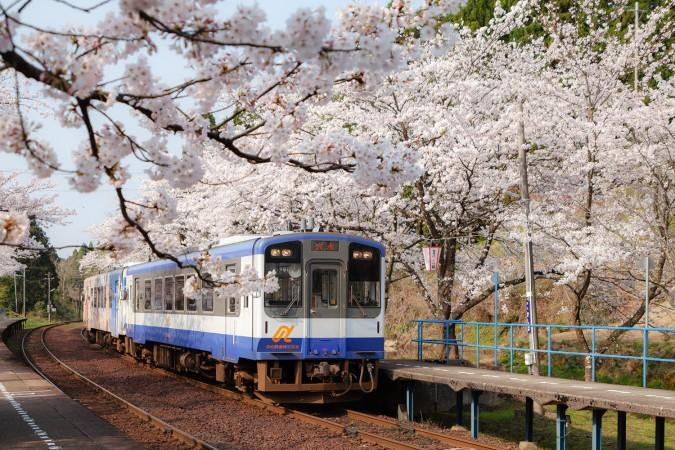
Cherry Blossom season during spring in Wajima - © Ishikawa Tourism
Essential Travel Information
Getting Around Wajima
- Public Transportation: Wajima is connected to other regions by a network of buses and trains, making it easy to travel within the city and to nearby areas. The Wajima City Bus offers convenient routes for exploring local attractions.
- Rental Cars: For more flexibility, renting a car is a popular option. It allows you to explore Wajima and its surrounding areas at your own pace. Make sure that you have an International Driving Permit (IDP) if you're renting a vehicle.
- Bicycles and Walking: Wajima is a pedestrian-friendly city with many attractions within walking distance. Bicycles are also available for rent and provide a pleasant way to explore the city's scenic spots.
ATM & Banking Services
In Wajima, ATMs are conveniently located throughout the city, including at major banks, convenience stores, and shopping areas, and most accept international credit and debit cards. For currency exchange, services are available at various locations, including some hotels and financial institutions. Before you travel, it's a good idea to convert some cash or utilize ATMs to withdraw local currency as needed.
Where to Stay in Wajima
- Traditional Ryokan: For an authentic Japanese experience, consider staying in a ryokan, a traditional inn that offers tatami mat floors, futon bedding, and onsen (hot spring baths). Ryokans in Wajima provide a unique glimpse into Japanese culture and hospitality.
- Hotels: Wajima offers a range of hotels, from luxury to budget options. Many hotels provide modern amenities, including Wi-Fi and restaurants, making them a comfortable choice for travelers.
- Guesthouses and Minpaku: Guesthouses and minpaku (private lodging) offer a more personal and often budget-friendly stay. These accommodations provide opportunities to interact with local hosts and experience life in Wajima from a local perspective.
Are you interested in Okayama? Discover more about this unique destination with our article here.
Articles for you

Explore Yala National Park - Sri Lanka Travel, Asia
Tucked away in Sri Lanka’s southeastern corner, Yala National Park is where wild nature meets deep tradition. Known worldwide for its leopard population, the park is also home to elephants, sloth bears, crocodiles, and hundreds of bird species. Beyond wildlife, Yala opens doors to a cultural landscape dotted with ancient temples, Buddhist ruins, and coastal villages. For travelers seeking more than just a safari, Yala offers a chance to explore eco-tourism, local communities, and sacred heritage sites.
Population: The Yala National Park area doesn’t have a human population.
Economy: The economy around Yala National Park thrives on a blend of eco-tourism, agriculture, and local services. Safari tours, eco-lodges, and cultural experiences drive steady income for nearby towns like Tissamaharama and Kataragama, supporting thousands of families.
Landmarks: Famous for Block I of Yala and wildlife encounters, including elephants, sloth bears, crocodiles, and exotic bird species.

Explore Galle - Sri Lanka Travel, Asia
Nestled on Sri Lanka’s southern coastline, Galle is a vibrant city where history meets the sea. Its cobbled streets, colonial architecture, and serene beaches make it a must-visit destination for travelers seeking a blend of culture, adventure, and relaxation. A UNESCO World Heritage site, Galle captivates visitors with its Dutch Fort, bustling markets, and friendly locals. Whether you’re exploring the ramparts at sunset or savoring fresh seafood by the shore, Galle promises an unforgettable journey into Sri Lanka’s heritage.
Population: Approximately 113,000 in 2023.
Economy: Galle’s economy thrives on tourism, trade, and fisheries. The city’s historic fort, colonial architecture, and coastal charm draw thousands of international visitors each year, making tourism its main economic driver. Fishing remains vital for local livelihoods, supplying fresh seafood across the region.
Landmarks: Famous for the Galle Fort, Dutch Reformed Church & Maritime Museum, and Unawatuna Beach.

Explore Bentota - Sri Lanka Travel, Asia
Nestled along Sri Lanka’s southwestern coast, Bentota is a tropical paradise that blends golden beaches, vibrant culture, and thrilling adventures. Famous for its calm waters, luxury resorts, and scenic river estuary, Bentota has become a top destination for travelers seeking both relaxation and authentic experiences. From serene beach walks at sunrise to adrenaline-pumping water sports, this coastal town offers a perfect balance of leisure and exploration. With its proximity to Colombo and Galle, Bentota is easy to reach, making it an ideal stop for both short escapes and extended holidays.
Population: Approximately 37,000 in 2023.
Economy: Bentota’s economy thrives mainly on tourism, which drives local businesses such as hotels, restaurants, and wellness retreats. The town also benefits from fishing, coconut cultivation, and handicrafts like wood carving and batik textiles. Many residents rely on the growing demand for water sports and Ayurvedic treatments, making tourism the backbone of both income and employment in the area.
Landmarks: Famous for Bentota Beach, Bentota River Safari, and Kande Vihara Temple.

Explore Mirissa - Sri Lanka Travel, Asia
Mirissa is a charming coastal town on Sri Lanka’s southern shoreline. Known for its golden beaches, turquoise waters, and vibrant marine life, it has become a must-visit stop for travelers exploring the island. Many come for whale watching, surfing, and sunset views at Coconut Tree Hill, but Mirissa offers much more than postcard beauty. The fishing boats you see anchored by the bay carry generations of stories. Local traditions, delicious cuisine, and a laid-back rhythm of life shape every visitor’s experience.
Population: Approximately 4,700 in 2023.
Economy: Mirissa’s economy is largely shaped by its coastal location. Fishing has long been the backbone of local livelihoods, with generations relying on the Indian Ocean for income. In recent decades, tourism has become the main driver of growth, thanks to whale watching, surfing, and beachside hospitality.
Landmarks: Famous for Mirissa Beach, Coconut Tree Hill, and Parrot Rock Bridge.

Explore Nuwara Eliya - Sri Lanka Travel, Asia
Tucked away in the Central Highlands of Sri Lanka, Nuwara Eliya is often called “Little England”. With its rolling tea plantations, cool misty mornings, and colonial charm, this mountain town feels like a step into another world. Travelers come here to breathe fresh air, walk through flower gardens, sip the finest Ceylon Tea, and enjoy a pace of life far from the island’s busy cities. Whether you’re drawn by scenic landscapes, heritage architecture, or the warmth of its people, Nuwara Eliya is a destination that blends nature, culture, and history in perfect harmony.
Population: Approximately 781,000 in 2023.
Economy: Nuwara Eliya’s economy thrives mainly on tea production, as it sits in the heart of Sri Lanka’s central highlands, famous worldwide for Ceylon Tea. The city also benefits from a growing tourism industry, attracting visitors with its colonial charm, cool climate, and scenic landscapes.
Landmarks: Famous for Gregory Lake, Hakgala Botanical Garden, and Victoria Park.

Explore Sukau - Malaysia Travel, Asia
Nestled on the banks of the Kinabatangan River in Sabah, Malaysian Borneo, Sukau is a destination where wildlife, culture, and conservation come together. Known as one of Asia’s top spots for river safaris and eco-tourism, this quiet village offers a front-row seat to encounters with Bornean orangutans, pygmy elephants, proboscis monkeys, and exotic birdlife.
Population: Approximately 1,400 in 2019.
Economy: Sukau’s economy is shaped by its riverine location and natural resources. Traditionally, the Orang Sungai community relied on fishing, small-scale farming, and forest gathering for their livelihood. Today, the village has shifted toward eco-tourism, with river cruises, jungle trekking, and homestays providing income.
Landmarks: Famous for the Kinabatangan River cruises, Gomantong Caves, and Ox-bow lakes and wetlands.
